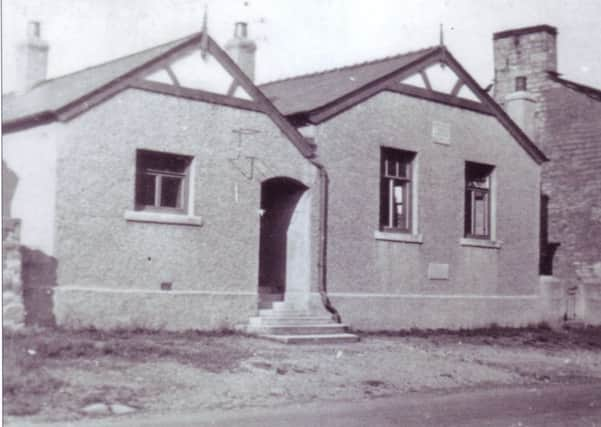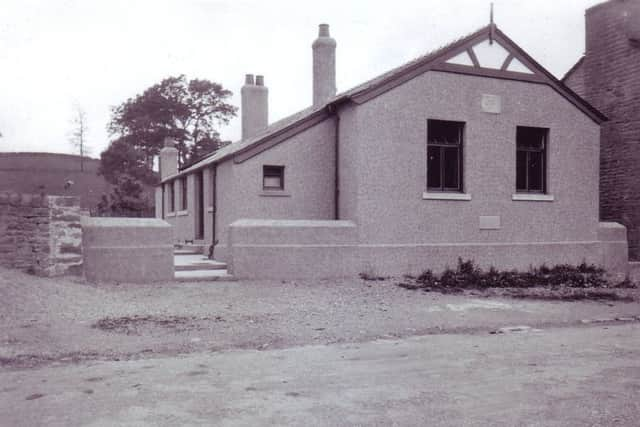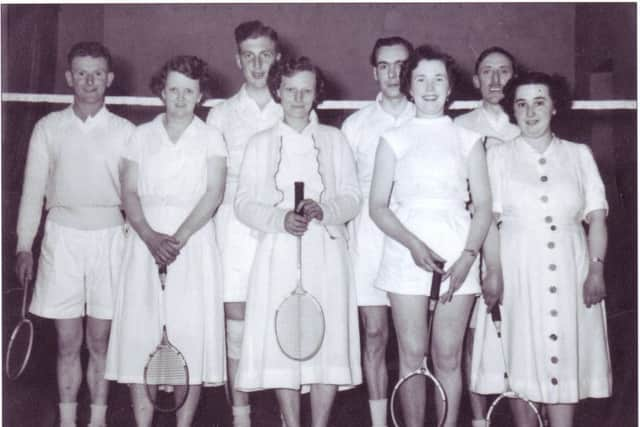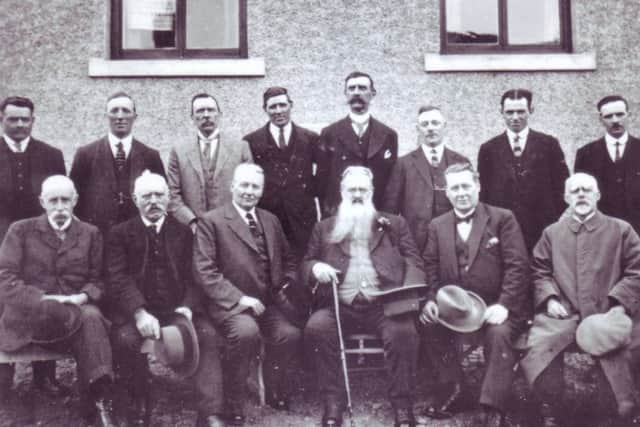Visions of an institute to help educate the people


Hornby Institute was built in 1914-16 and paid for by Colonel Foster of Hornby Castle; he could even afford the services of the renowned church architects Austin and Paley to design the building which is quite magnificent, with its pitch pine staircase and interior.
Further down the valley at Caton stands the Victoria Institute built in 1888, this another superior building, constructed in stone.


Advertisement
Hide AdAdvertisement
Hide AdCaton at this time was fortunate in having a number of wealthy mill owners and landed gentry with deep pockets.
Wray at this time had fallen on hard times. By 1900 the village has lost most of its early industry including the silk mill, hat making and nail making. In fact by this date nearly a quarter of the houses in the village were empty.
In fact the village had a rather run down appearance.
By the 1920s life for Wray villagers was improving, so around 1922 they decided to raise money to build a village institute. It took two and a half years to raise the money, the village being fortunate in Mr Foster of Hornby Castle donating the site free for the building of the institute.


The following is an account of the open of Wray Institute on Easter Monday 1924:
Advertisement
Hide AdAdvertisement
Hide AdWray can now boast of a new institute of its own, and although not quite so early in the field as some of the neighbouring villages, it has the advantage of not being saddled with a big debt.
The institute was opened on Monday afternoon in the presence of a large number of villagers, by Mr R S Close of St Annes.
Responding to the call of the chairman, Mr Close said he was pleased to open the new institute, which he hoped would do a lot of good.


Mr Close mentioned that if his wife had lived, they might not have got the site, as he had hoped to buy it and build a bungalow on the ground so dear to him. His grandfather lived there for 60 years and all the family, excepting his mother, were born in the old thatched cottage alongside the barn and stable.
Advertisement
Hide AdAdvertisement
Hide AdIt is a spacious and efficiently designed building, fronting on to the main street, presenting a handsome rough cast exterior, while the interior is plastered and colour-washed.
The institute contains a large assembly room with stage and piano, with chairs and forms to seat about 200 people; a well lit billiard room, a kitchen or reading room fitted with a boiler, sink and cloakrooms. The large room, which is lit at night by seven oil lamps, will be used for dances, etc.
The Wray Brass Band played selections in front of the building and when Mr Close unlocked the door he had a large audience.


Mr Close asked the villagers to bring as much money to the institute fund as they possibly could, and take away as little as they could.
Advertisement
Hide AdAdvertisement
Hide AdMr Close stated that it was a beautiful institute and the only improvement he could suggest was the addition of a grass plot with seats around, where the ladies could sit in summer.
Mr Bent from Wray House said they were there to put the finishing touch to two and a half year’s work, in which everybody had done their share. They had had to cut the coat according to the cloth, but it had turned out a good deal better than they expected.
Mr Stephenson’s financial statement showed an income of £1,033-1s-0d, and an expenditure which left a debit balance of £65-0s-2 and a half d. It was intended to fit up a billiard room at a cost of £85, and a ladies room at £80, bringing the probable deficit up to £230.
The chairman Mr Bent said a billiard table was all very well in its way, but he hoped most earnestly that the institute would be used for more than billiards and cards.
Advertisement
Hide AdAdvertisement
Hide AdHe hoped to see instead a wireless set with a loud speaker, by means of which they could have the best music and lectures, and by making a small charge could establish a regular source of income which would help them to carry on the institute.


He had nothing to say against billiards, but he would like to see the building used to educate the people.
Mr Close, who opened the institute, stated that the institute was an excellent one for wedding celebrations, just half way between church and chapel. It was also, he added, half way between a public house and the police station.
Mr R S Close Jnr spoke affectionately of Wray, which he described as one of the prettiest villages in England.
Advertisement
Hide AdAdvertisement
Hide AdHe asked them to look upon the committee more favourably than most committees were looked upon and so help to make the social life of the institute run smoothly.
Regarding the absence of a ladies room, he asked how were the young ladies of Wray going to find husbands if there were no rooms for them at the institute.
At the entertainment which followed songs were given by Misses Wilkinson and C Remington and Messrs Parke and Miller; piano forte solos by Miss Dodd; instrumental quartet by Miss and Messrs Townson, M Foxcroft and J Kenyon; a duologue by Mrs Bent, Miss Lees and Master E Bull; and a sketch by Mrs Shepherd, Misses Lees and Remington.
In the evening a dance was held, Troughtons Band supplying the music.
Advertisement
Hide AdAdvertisement
Hide AdOne casualty of the building of the new institute was the removal of the tree which had been planted in 1919 in memory of Wray men who had lost their lives in the First World War.
It seems that some villagers thought planting a tree at this place was not a good idea. The tree was planted in the centre of a wrought iron circle suitably inscribed and made by the local blacksmith. This ironwork seems to have been kept in a barn for many years after; possibly it was lost in the Wray flood of 1967.
Wray Institute has had many small extensions added over the years; a modern heating system and kitchen have also been fitted.
In the early 1980s the timbered roof truss tie beams were removed and replaced with iron tie irons, at a much greater height; this was a big improvement for the badminton players.
Advertisement
Hide AdAdvertisement
Hide AdIt was said that Wray badminton club were unbeatable in Wray Institute owing to the low beams.
The Wray Village Institute is still fully financed by Wray people, now the money comes from the Scarecrow Festival held at the end of April, until the first bank holiday in May.